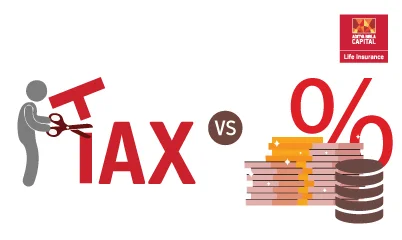How to Submit a TDS Return Online?


Get Guaranteed Returns After a Month^
Unlock the Power of Smart Investment!


-
 Table of Contents
Table of Contents- Describe the TDS Return
- The Criteria for TDS Return Eligibility
- Submission of TDS Return
- Process for Submitting TDS Returns
- TDS Return File Validation
- Late Penalty For Submitting a TDS Return
- Failure To File a TDS Return
- Using the TDS Return Preparation Tool
- New TDS Return
- The Steps To File a Revised Return
- Conditions for Submitting an Amended TDS Return
- TDS Refund
- The Report on the TDS Refund
- TDS Refund Time Frame
- Rate of TDS Refund Interest
- Advantages of TDS
- Essential Considerations for a TDS Return Submission Free of Errors
- FAQs
Describe the TDS Return
The Criteria for TDS Return Eligibility
Submission of TDS Return
Process for Submitting TDS Returns
TDS Return File Validation
Late Penalty For Submitting a TDS Return
Failure To File a TDS Return
Using the TDS Return Preparation Tool
New TDS Return
The Steps To File a Revised Return
Conditions for Submitting an Amended TDS Return
TDS Refund
The Report on the TDS Refund
TDS Refund Time Frame
Rate of TDS Refund Interest
Advantages of TDS
Essential Considerations for a TDS Return Submission Free of Errors
Frequently Asked Questions on How to Submit a TDS Return Online?
Submit a correction statement to add deductee records to a specific challan. The total tax in the deductee information on the regular and correction statements must be more than or equal to the tax deposited in the challan's periodic report.
Once a challan is booked, the information cannot be changed. A booked challan's underlying deductee data may be corrected.
The mistake may have been made while citing CIN information (Challan serial number, BSR code, and challan tender date) in the TDS statement or the information given by the Bank. While mistakes cannot be corrected, a rectification statement may be filed for a TDS statement error.
The inaccuracy in stating the challan amount might be the root of the problem. By submitting a correction statement, the situation may be fixed.
A single correction file may include many correction statements, depending on the kind of repair. Numerous batch correction statements refers to a correction file with multiple correction statements.
The tax credit will not appear on the Form 26AS of the deductees in your statement if the approved regular TDS/TCS statement has errors, such as inaccurate challan data or a PAN that was either omitted or entered improperly.
You must file a rectification statement to address any errors in the approved regular TDS/TCS statement to permit the deductees' valid credit on Form 26AS.
The File Validation Utility will not verify the TCS statement if PAN quoting compliance of 85% is not met, which means that out of the total number of collected entries in the TCS statement, the PAN should be present for 85% of the records. The data for the remaining collected may be submitted as and when PAN information is obtained, although it is advised that the documents containing 85% of valid PAN be reported first.
The "amount paid" and "income tax deducted at source" control totals included on Form No. 27A should correspond to the relevant control totals in the e-TDS/TCS return. Each e-TDS/TCS return must be submitted on a separate Form No. 27A.
for Salaried Individuals¹
-
Disclaimer
ABSLI Salaried Term Plan (UIN:109N141V01) is a non-linked non-participating individual pure risk premium life insurance plan; upon Policyholder’s selection of Plan Option 2 (Life Cover with ROP) this product shall be a non-linked non-participating individual savings life insurance plan.
1LI Age 21, Male, Non Smoker, Option 1: Life Cover, PPT: Regular Pay, SA: ₹ 1 Cr., PT: 10 years, Premium paying term: 10 years, Annual Premium: ₹ 5900/- ( which is ₹ 491.66/month) Premium exclusive of GST. On death, 1 Cr SA is paid and the policy terminates.
ADV/9/22-23/1583
Subscribe to our Newsletter
Get the latest product updates, company news, and special offers delivered right to your inbox
Thank you for Subscribing
Stay connected for tips on insurance and investments

 Home Loans
Home Loans
 Personal
Loans
Personal
Loans
 SME Loans
SME Loans
 Business Loans - Udyog
Plus
Business Loans - Udyog
Plus
 Loan against Securities
Loan against Securities
 Mutual Funds
Mutual Funds
 Stock and
Securities
Stock and
Securities
 Portfolio
Management Services
Portfolio
Management Services
 Pension Funds
Pension Funds
 Life
Insurance
Life
Insurance
 Health
Insurance
Health
Insurance
 Wellness
Solutions
Wellness
Solutions
 Pay Bills
Pay Bills
 Pay anyone
Pay anyone
 Pay on call
Pay on call
 Payment
Lounge
Payment
Lounge
 ABC Credit
Cards
ABC Credit
Cards

 1800-270-7000
1800-270-7000








